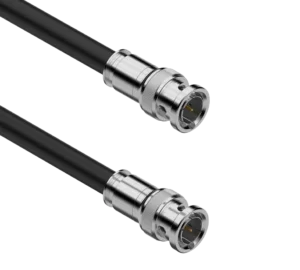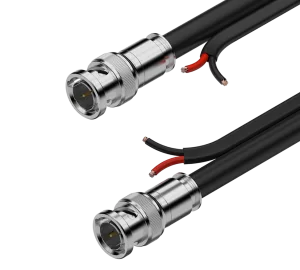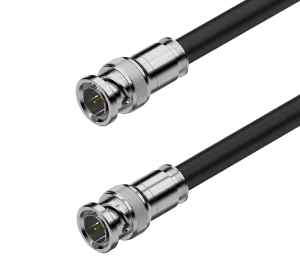BZBGEAR SDI Cables
BZBGEAR offers durable, high-performance SDI cables for a variety of professional AV needs. The 1080P FHD 75-ohm Shielded SDI Cable ensures reliable HD video transmission with solid shielding.
BZBGEAR Innovations
BZBGEAR Innovations
For combined video and power runs, the 1080P FHD 75-ohm Premade Shielded SDI with DC Siamese Cable is ideal for simplifying surveillance and camera installations. For 4K applications, the 12G-SDI 75-ohm Shielded Cable delivers ultra-high-definition video with excellent signal integrity, even over longer distances.
All cables are built for lasting performance in commercial and broadcast environments.

3G SDI vs. 12G SDI:
Which one do you need?

3G SDI (3 Gigabit Serial Digital Interface) and 12G SDI (12 Gigabit Serial Digital Interface) are two different standards used in the broadcasting and professional video industry for transmitting high-definition video signals. They differ in terms of data bandwidth, resolution support, and their applications. Let's compare these two standards:
| 3G SDI | 12G SDI | |
|---|---|---|
| Data Bandwidth | 3G SDI has a data bandwidth of 3 Gbps (gigabits per second). It can transmit a maximum of 1080p (Full HD) video at 60 frames per second (fps). | 12G SDI, on the other hand, has a significantly higher data bandwidth of 12 Gbps. This allows it to support much higher video resolutions and frame rates. |
| Resolution Support | 3G SDI is primarily used for transmitting standard high-definition video signals up to 1080p resolution. | 12G SDI is designed to handle ultra-high-definition (UHD) video signals, including 4K (3840x2160) and even 8K (7680x4320) resolutions. It can also support higher frame rates, such as 60fps in 4K. |
| Cable Compatibility | 3G SDI typically uses standard BNC (Bayonet Neill-Concelman) connectors and coaxial cables. It's compatible with existing 3G SDI infrastructure. | 12G SDI also uses BNC connectors but requires specialized cables designed to handle the higher data rates. These cables are often thicker and more expensive. |
| Use Cases | 3G SDI is commonly used in professional video production for transmitting HD signals within a studio or between equipment like cameras, switchers, and monitors. It's widely used in the broadcast industry. | 12G SDI is used for applications that demand higher resolution and frame rates, such as 4K and 8K video production. It's often used in live sports broadcasting and high-end video production studios. |
| Future-Proofing | While 3G SDI remains a reliable standard for HD video, it may not be suitable for emerging 4K and 8K production needs. | 12G SDI is more future-proof, as it can handle the demands of higher resolution and frame rates, making it a preferred choice for UHD and 8K workflows. |



